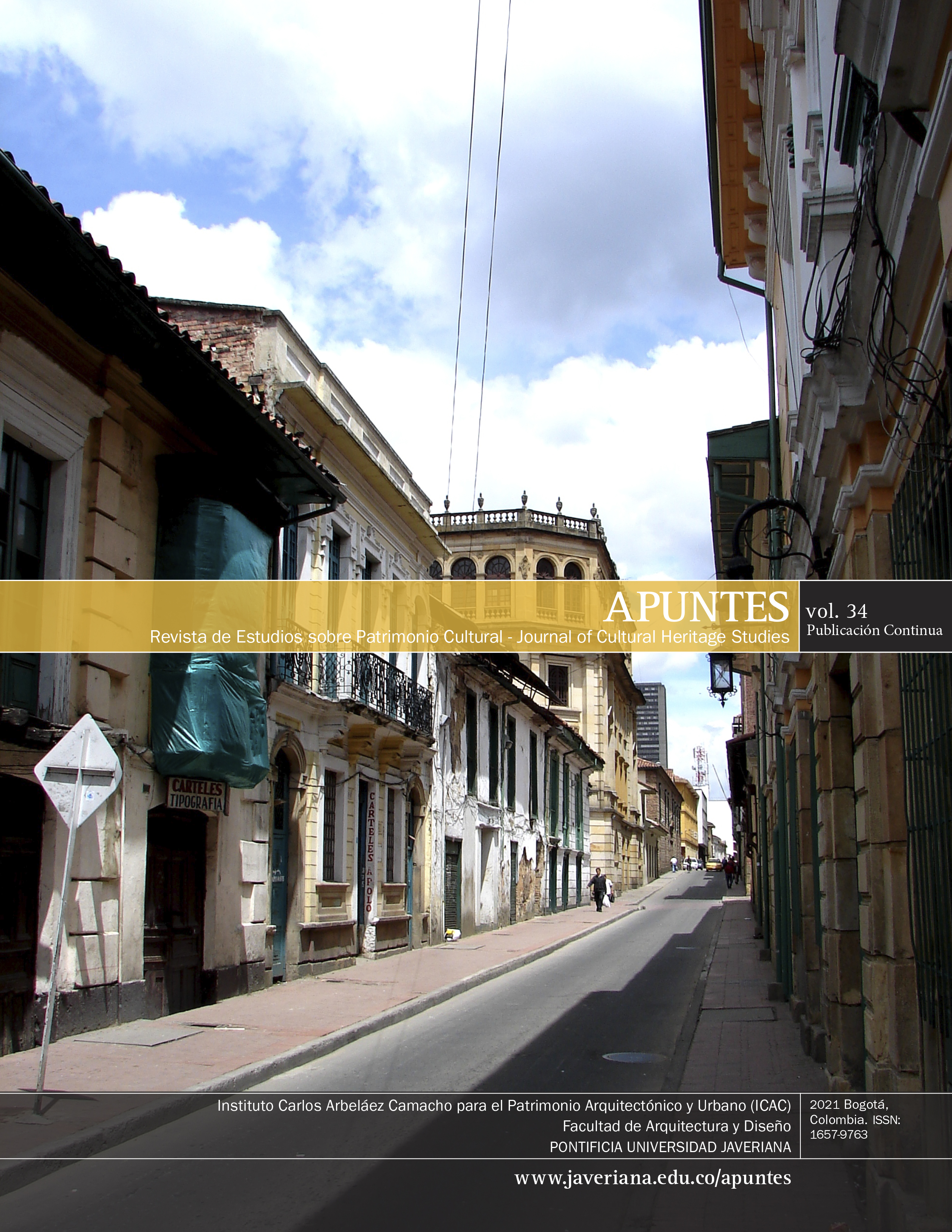Abstract
Sativanorte, nestled in the Eastern Andean mountain range, in the department of Boyacá, has recently (2018) declared its foundational urban center as Cultural Heritage Property) with the category of urban group, one of the typologies established for the declaration. As one of the main grounds for this, the characteristic of presenting an original layout, anatomical or anthropomorphic in shape, unknown in urban layouts throughout Colombia or, at least, not identified in any other municipality, in addition to other tangible characters, such as the built typologies, materials, conservation and homogeneity, among others, and immaterial, such as the spirit of the inhabitants to remain united after the catastrophe that occurred in the winter of 1933, is pointed out as one of the main reasons for this.
The urban group has been declared on the basis of these elements, concretized in valuation criteria that at the same time allow the attribution of heritage values, which are the ones that give body to the administrative act. However, beyond the criteria and values, the norms only establish the procedure indicated for this administrative part, but nothing is specified for the technical part. The technical document that allows a glimpse of a patrimonial analysis of an urban group is the Manual for inventories of immovable cultural site of the Ministry of Culture (2005), but it focuses on the individuality of the property, it does not analyze the whole, but only as subordinated to the individual property, besides focusing almost entirely on material issues.
The main objective of this article is to make known the values that have led to the declaration as Cultural Heritage Property of the urban group of Sativanorte, as an original element in the Colombian national heritage and, consequently, it seeks to establish a valid working method for the declaration of properties of cultural interest with particular characteristics, such as groups or urban sectors that are adapted to the peculiarities of the composite cultural properties.
- Alcaldía de Barranquilla (2018). Plan Especial de Manejo y Protección de los barrios de El Prado, Bellavista y Alto Prado de la ciudad de Barranquilla.
- Alcaldía de Sátivanorte (2000). Esquema de Ordenamiento Territorial EOT 2000-2008.
- Colmenares, G. (1997). La provincia de Tunja en el Nuevo Reino de Granada (1539-1800). TM Editores.
- Countryside Commission (1998). Countryside Character. The character of England’s natural and man-made landscape (Vol. 3: Yorkshire & The Humber). Countryside Agency.
- García García, J.J. (2019). Paisaje, lugar y territorio: conceptualizaciones para recuperar el genius-loci. Revista Ciudades, Estados y Políticas, 6(3), 17-25.
- Gobierno de Colombia. (1963). Decreto 264. Por el cual se reglamenta la Ley 163 de 1959 sobre defensa y conservación del patrimonio histórico, artístico y monumentos públicos de la Nación. DO: 31.025.
- Gobierno de Colombia. (1997). Ley 397. Ley General de Cultura. DO: 43.102.
- Gobierno de Colombia. (2008). Ley 1185. Por la cual se modifica y adiciona la Ley 397 de 1997 -Ley General de Cultura- y se dictan otras disposiciones. DO: 46.929.
- Gobierno de Colombia. (2015). Decreto 1080. Decreto Único Reglamentario del Sector Cultura. DO: 49.523.
- Groot, A. M. et al. (2017). Sátivaviejo: arqueología histórica de un pueblo en Boyacá a inicios del siglo XX. FUNCAA.
- Ministerio de Cultura. (2005). Manual para Inventarios de Bienes Culturales Inmuebles. Dirección General de Patrimonio.
- Ministerio de Cultura. (2010). PNRCH, Plan Nacional de Recuperación de Centros Históricos. Conpes 3658/2010.
- Parra Caro, J. D. (1964). Destino histórico de un pueblo. Imprenta Departamental.
- Secretaría Distrital de Planeación. Bogotá. (2019). Bienes de Interés Cultural del Distrito Capital. http://www.sdp.gov.co/gestion-territorial/patrimonio-y-renovacion-urbana/bienes-de-interes-cultural
- UNESCO. (2008). Directrices Operativas para la Salvaguarda del Patrimonio Cultural Inmaterial. Asamblea General de los Estados Partes de la Convención. II Reunión.

This work is licensed under a Creative Commons Attribution 4.0 International License.


